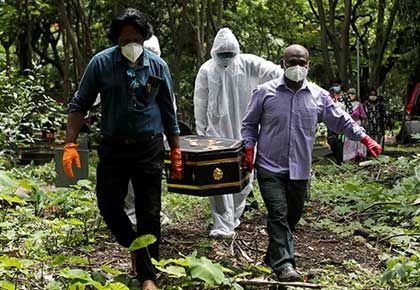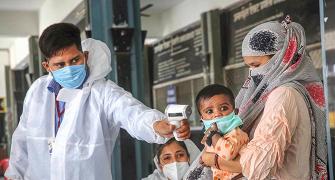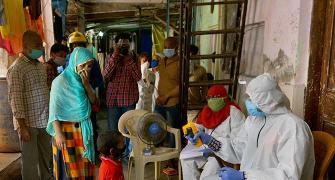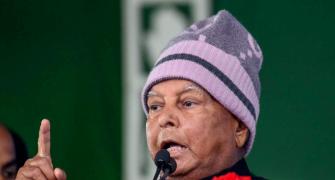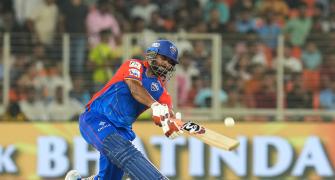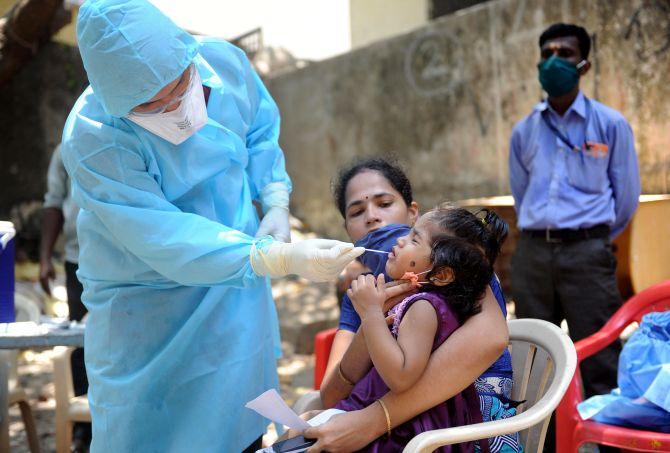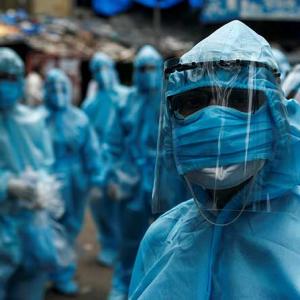'It will only get worse, definitely, for the next month and one-and-a-half months.'
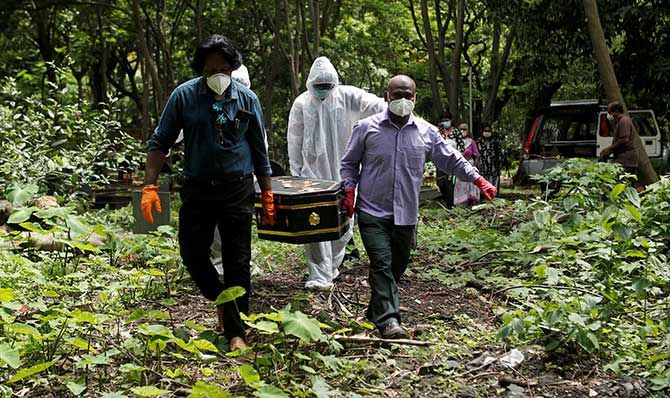
"We are equally in a mess," remarks a viral disease expert in Mumbai, who did not want to be named, when asked how the National Capital Region's situation compared with that of the Mumbai Metropolitan Region.
COVID-19 cases in Mumbai are going up and up.
COVID-19 cases all over India are skyrocketing too.
And Sunday was the world's highest jump in cases since the pandemic began, with 183,020 new cases being recorded in a 24-hour span, bringing total figures up to 9.35 million globally.
We now all know of families who have COVID-19. Of people who have died of it. Of people fighting it tooth and nail at this very moment.
As of June 23, India had 456,115 cases and an unfortunate 14,483 deaths*.
In initial days, even as cases shot up, India took heart from the fact that the death toll was low.
Why are the deaths now rising so fast?
Vaihayasi Pande Daniel/Rediff.com spoke to a doctor in each of India's two largest metropolitan areas, for answers about the most worrying aspects of this dreaded disease -- a specialist in Gurugram (population: Approximately 3,100,000**), NCR, battling the disease on the frontlines and an infectious disease physician in Mumbai (population: approximately 20,359,000**).
Dr Vikas Deswal, who qualified from the Kurukshetra University and MMU Mullana, both in Haryana, and the Christian Medical College, Vellore, is a consultant for infectious diseases for Medanta, Gurugram.
Dr Trupti Gilada, who trained at the KEM and Nair hospitals, Mumbai, and spent three years doing her fellowship in infectious diseases at Harvard, is an infectious disease specialist at the Prince Aly Khan Hospital and the Unison Medicare and Research Centre in Mumbai.

Why is the mortality rate going up in India?
Dr Deswal, NCR: When we first (started) seeing cases, initially, the mortality rate was pretty low. It was around 1 per cent in my hospital. And the same was in Gurgaon too.
But now, the mortality rate has gone up to around 2 to 2.5 per cent.
We are seeing more and more sicker cases and the majority of deaths are happening in elderly patients and those who have comorbidities, like diabetes, blood pressure or cardiac problems
The four major risk factors for the disease and causing deaths are diabetes, blood pressure, cardiac diseases and age
Definitely the rates of deaths have increased in the last one month.
It is probably because of more community spread and more number of tests, which we are doing right now.
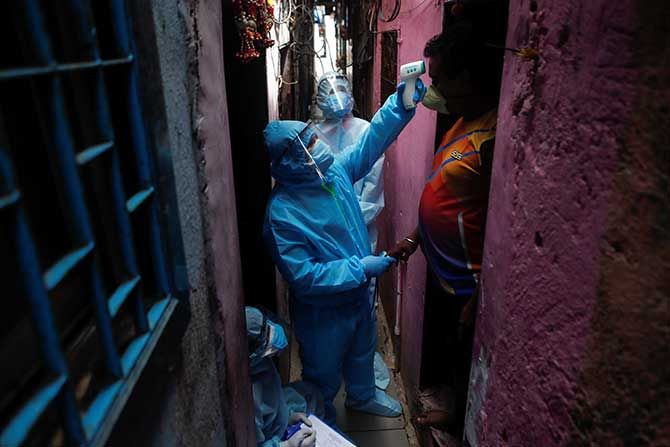
Dr Gilada, Mumbai: The deaths are going up because there is more testing, but also because there is actually an increasing number of cases.
In that entire graph of the disease we are still on the rise, still climbing up.
When we are going to climb up, then the total number of cases increases -- then proportionately there are going to be more deaths.
There will be many more deaths because our system is overburdened. And we are not able to provide the quality of care that we would have otherwise provided.
If we had a system that wasn't so overburdened, we would have been able to concentrate on each patient's care much better.
Right now, that's the most critical part of the epidemic: That our hospitals are overburdened.
We are having a lot of mortality because of this overburdened health system.
Mumbai is a very difficult city to handle.
It's just got too many people in a very tight space. And with the lockdown opening up, this is something that we were expecting -- increasing number of cases.
(On whether Mumbai is reaching a New York-like situation) I just hope we don't become like New York. New York had just way too many cases during that period.
But let's understand that we still don't know when our peak is arriving and we don't know what our peak is going to look like.
One thing clear is that our mortality is definitely lower more than most other countries. Total mortality.
Even given that we aren't testing enough, our mortality is definitely lower, because our age structure, demographics is towards the younger population.
What's worse for this city, at this point, is the onset of the monsoon, leave aside the COVID-19 situation.
During the monsoon the BMC (BrihanMumbai Municipal Corporation) hospitals are always full because we get with the monsoon all the diseases - dengue, leptospirosis, viral fevers, influenza and those diseases are still going to be there. It's not that those diseases have gone.
So we will have these diseases that will be rising. In addition to which we have COVID-19.
What we will be only documenting is COVID-19 testing and COVID-19 mortality.
We might lose a lot of our patients to these non-COVID-19 illnesses, who we probably wouldn't have lost otherwise, just because hospitals are so over full.
These are the patients who might not get the required care in the hospital (in the monsoon).
So, the COVID-19 mortality goes way beyond just positive patients.
What will really give us a good estimate of what is the COVID-19 effect on mortality is the all-cause mortality.
People may be dying of a lot of other things, way more than what they would have died at other times or pre-COVID 19 times, only because they cannot get the required healthcare.
That would actually tell us what the real effect of COVID-19 on the healthcare system is.
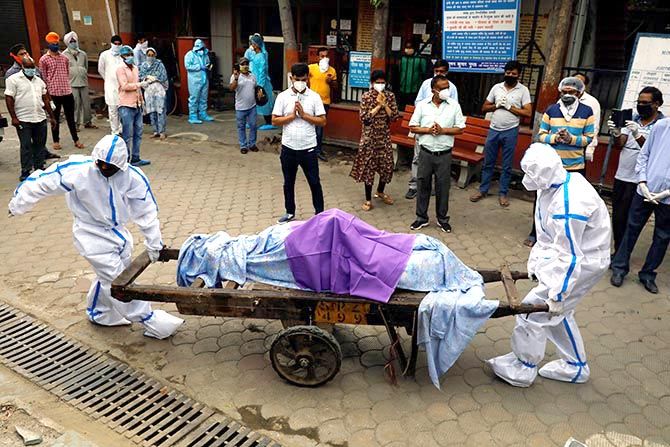
The peak:
Dr Deswal, NCR: It will only get worse, definitely, for the next month and one-and-a-half months.
We will probably have the maximum number of cases per day around mid-July.
Dr Gilada, Mumbai: We think it is going to be in the next four or six weeks. But, you know, these are all estimates.
From all the epidemiological and modelling studies, that are becoming available, a lot of them say late July or early August.

How full are hospitals and the availability of ICU beds?
Dr Deswal, NCR: The situation in Gurgaon is also equally bad (as Delhi proper), though the administration is definitely, definitely working hard and the government is working hard.
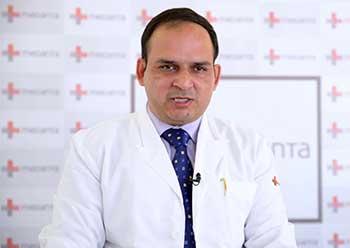 IMAGE: Dr Vikas Deswal
IMAGE: Dr Vikas DeswalBoth the government and private hospitals are flooded with patients.
No doubt it is difficult to get a bed, but we are sort of trying to organise beds for patients and we are not turning away anyone as of now.
Yes, we have ICU beds. In the hospital, where I work, we have four ICUs which are dedicated to COVID-19.
There is not yet (a shortage of ICU beds or ventilators and other facilities in Gurugram).
Compared to cities like Delhi, Bombay and Ahmedabad, the situation, at the moment, is better than those parts, but it is definitely going to get worse.
We are seeing more and more cases every day.
Most of the beds are full in Delhi in both government and private hospitals, so there is a lot of spillover to Gurgaon, because it is just only a few kilometres away; there is no difference between Delhi and Gurgaon actually, otherwise a single city you can say.
Lot of spillover from Delhi, that is the problem here.
There is a group called Gurugram COVID-19 Volunteers Group, which has come together, which includes doctors from all the major hospitals in Gurgaon, mainly led by Medanta, and a few multinationals also (Fortis, Artemis, Makemytrip, McKinsey, ReNew Power, SRL Labs, DLF etc).
We have started a separate centre for COVID-19 patients, basically a private hospital (repurposing the earlier Medeor hospital at Manesar), which is run as a nonprofit organisation, and even a poor patient can go and seek treatment over there.
It's a separate hospital which is a 125-bedded hospital that can be expanded to 200.
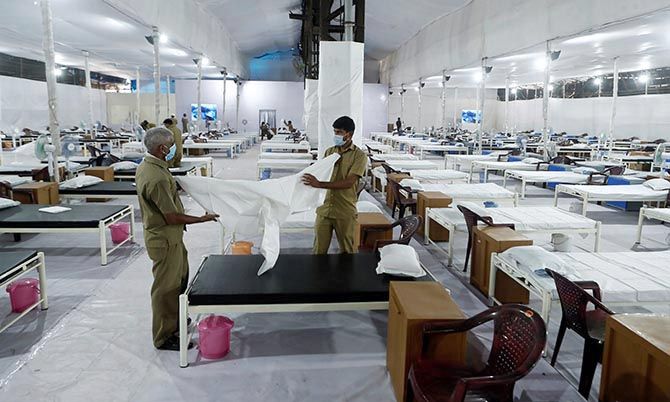
Dr Gilada, Mumbai: What definitely is the most difficult part right now in the epidemic is over full hospitals, overburdened hospitals and not being able to find ICU beds. And that is true across public and private hospitals.
All ICU beds, at all times, are full.
Because all the BMC hospitals are so overfull, from what I've learned from my colleagues, they are actually triaging patients (deciding order of treatment) based on who is the patient who actually should go onto the ventilator or into the ICU.
In general, they are just running overfull, both in terms of the ward beds and the ICU beds.
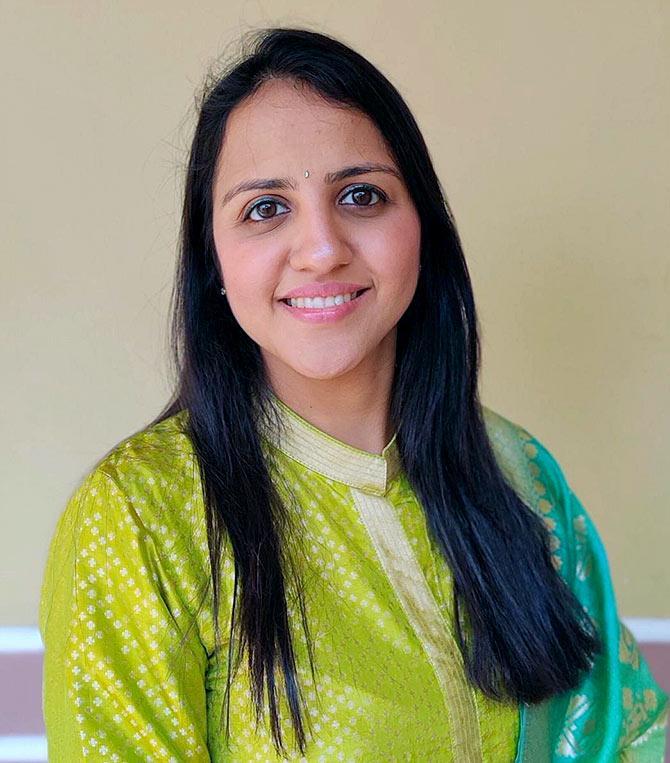 IMAGE: Dr Trupti Gilada
IMAGE: Dr Trupti GiladaDoctors in the BMC hospitals have a very wide range of experience, and they are excellent in their clinical acumen and management.
What is probably making it difficult at this point is just the number of cases. And the patient ratio in these hospitals.
The entire healthcare system doesn't just depend on the doctor. It also depends on the nursing staff available, doctor-patient ration and the nurse-patient ratio.
When that starts getting overwhelmed, then there is definitely an increase in mortality rates
That's true across hospitals, even private hospitals.
When they are so overwhelmed, when ICUs are full, there are critical patients also lying in your wards, who require equal attention -- then how much ever you try you are never able to provide the optimal care.
And that's exactly what we feared when we said overburdened health system in the rising curve of the epidemic.
So definitely we are there.
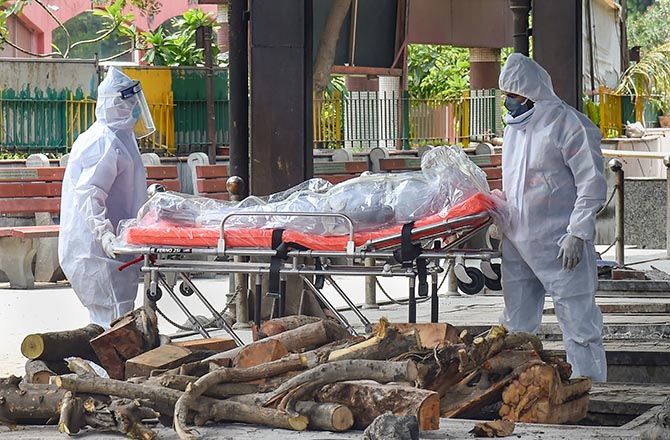
Connection between an increased death rate and classification of deaths:
Dr Gilada, Mumbai: There has been a lot of discussion about how the death certificates are filled because the data from the death certificates is what is taken to actually define the cause of death.
I agree that there is a lot of concern that if you just put down acute cardiac arrest, without mentioning COVID-19 as the underlying disease, then it doesn't get counted as a COVID-19 death
It's definitely not deliberate. I think it's because there isn't enough awareness among physicians who are filling in the death certificates about how this needs to be filled in, so that there can be right counting of the disease deaths - COVID-19 or any other disease.
This is not just with COVID-19. This has been an issue for years together and off and on there is a discussion.
When Dr Soumya Swaminathan was at (Delhi's) Indian Council of Medical Research (as director general), she really wanted to do work on this aspect of creating awareness amongst doctors about filling in the death certificate in the right way, so that the cause is definitely what they really want to count.
You know, this is something that will not change overnight.
It's such an ingrained habit (not taking care while) filling the death certificate and the cause of death.
Not everyone understands the gravity of this entire situation: Of filling the death certificate correctly.
This will need to be taken up by the government in a very big way. And there will have to be a lot of awareness amongst doctors to actually change this -- to make the filling of death certificates very specific.
Dr Deswal, NCR: (On death rate going up because there's a better classification of deaths now) Probably.
*Worldometers.info
**Population.city.com
Production: Ashish Narsale/Rediff.com
